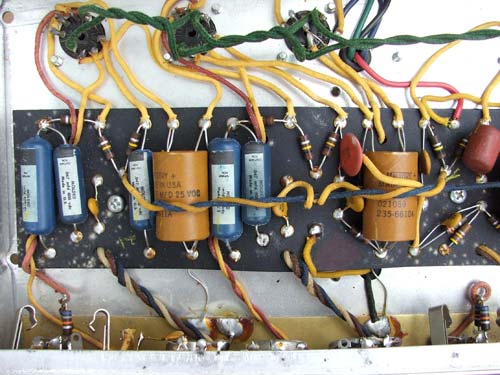Kingston
Well-known member
Hi all,
I have this sloppily made NYD two-bottle with very high quality parts that I will completely rebuild. This time I'm gonna draw up the layouts carefully and get it *right*.
I not only have parts for 4 channels, but also an oversized Welter PSU transformer big enough for 4 channels. Based on the previous build I could fit it all in a 2U unit.
So why not?
I have gathered some images from the DIY builds from around here to serve as guides, and I suppose a good starting point for layouts would be NYD's MILA images, since he had zero noise issues. Those seem pretty clear, and I have a decent understanding on grounding (bus vs. star vs. local bus grounding). But I'd like to see more examples.
1. Would any of you have images/links of super high quality point-to-point tube preamp layout work? Something that is known to have absolutely no noise issues with rugged build?
2. If I make 3-4mm aluminum sheet compartments/shields for each channel, does that actually help?
3. How much would such a thing also shield the PSU trafo, or should I ditch the idea and do an external PSU box (something I've done in the past with mixed results)?
4. There are preamps with tubes in their own compartment, or on the back side of the case, and some with tubes on the PCB/turretboards. What's best?
5. separate compartments for audio transformers?
6. other proven layout tips
As these preamps have 60-80db of gain I thought better be safe than sorry. I realise this is a big topic, but also one that should have very clear rules by now since like the fourties, so I'd appreciate any pointers/images/articles. Even little tips, like wire type/size/length.
Thanks for looking,
Mikko
I have this sloppily made NYD two-bottle with very high quality parts that I will completely rebuild. This time I'm gonna draw up the layouts carefully and get it *right*.
I not only have parts for 4 channels, but also an oversized Welter PSU transformer big enough for 4 channels. Based on the previous build I could fit it all in a 2U unit.
So why not?
I have gathered some images from the DIY builds from around here to serve as guides, and I suppose a good starting point for layouts would be NYD's MILA images, since he had zero noise issues. Those seem pretty clear, and I have a decent understanding on grounding (bus vs. star vs. local bus grounding). But I'd like to see more examples.
1. Would any of you have images/links of super high quality point-to-point tube preamp layout work? Something that is known to have absolutely no noise issues with rugged build?
2. If I make 3-4mm aluminum sheet compartments/shields for each channel, does that actually help?
3. How much would such a thing also shield the PSU trafo, or should I ditch the idea and do an external PSU box (something I've done in the past with mixed results)?
4. There are preamps with tubes in their own compartment, or on the back side of the case, and some with tubes on the PCB/turretboards. What's best?
5. separate compartments for audio transformers?
6. other proven layout tips
As these preamps have 60-80db of gain I thought better be safe than sorry. I realise this is a big topic, but also one that should have very clear rules by now since like the fourties, so I'd appreciate any pointers/images/articles. Even little tips, like wire type/size/length.
Thanks for looking,
Mikko




